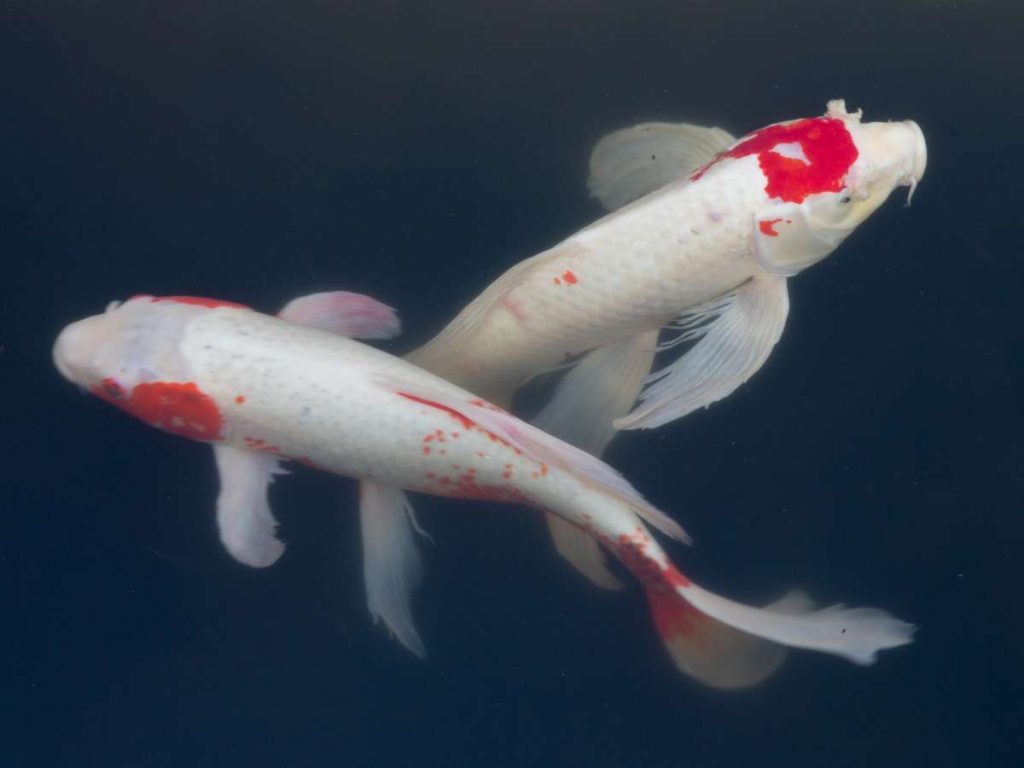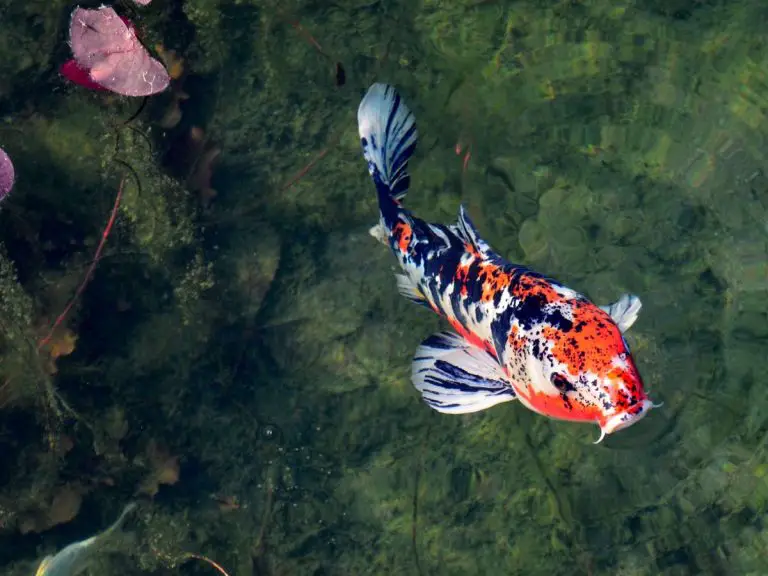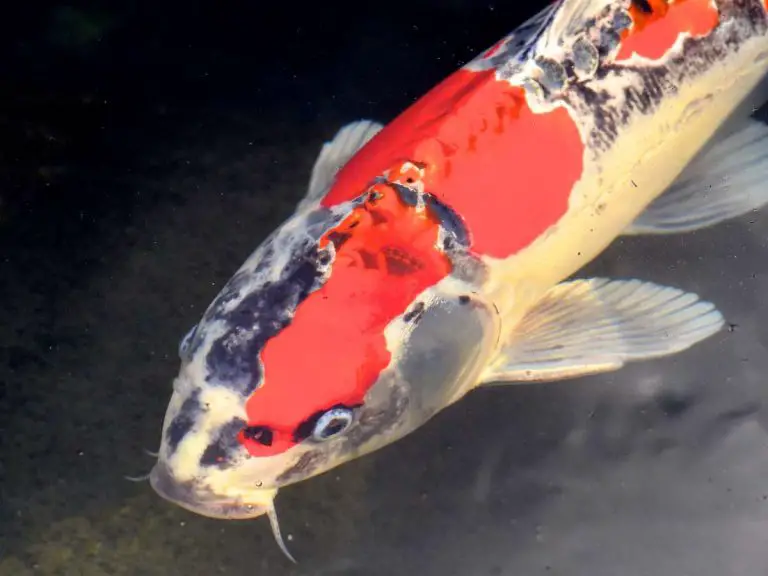Koi Fish Sex Identification: How To Tell If Your Koi Are Male Or Female
Wondering how to tell your male and female koi fish apart? You’re in luck! In this article, we’ll dive into the various methods and techniques used for koi sex identification. Whether you’re a hobbyist, aquarist, or just interested in learning more about these beautiful creatures, we’ve got you covered.
So, how can you determine if your koi fish is male or female? Well, it turns out there are several visual clues and behavioral characteristics that can help you out. From differences in body shape and fin lengths to variations in coloration and pattern, these features can provide valuable insights into the gender of your koi fish.
But that’s not all! We’ll also explore the different techniques for sex determination, including non-invasive methods like visual inspection and observation, as well as more invasive techniques like ultrasound and biopsy sampling. Plus, we’ll uncover the challenges and limitations that can arise when trying to identify the sex of juvenile or young koi fish.

Anatomy of koi fish
If you want to tell male and female Koi apart, it’s important to first understand their anatomy. Let’s take a closer look at the external features that can help us determine the gender of these beautiful creatures.
Description of the external anatomical features of koi fish
Koi fish have several distinct characteristics that can provide clues about their sex. One key feature is the shape of their body. Male koi tend to have a slender and streamlined body shape, while females often have a rounder and fuller body shape. Additionally, males typically have a more pronounced and angular anal fin, while females tend to have a more rounded and shorter anal fin.
In addition to body shape, the size of the koi fish can also be an indicator of its gender. Female koi tend to be larger in size compared to their male counterparts. However, it’s important to note that size alone is not always a definitive indicator of sex, as there can be variation among individuals and different koi varieties.
Illustrating the differences between male and female koi fish
| Male Koi Fish | Female Koi Fish | |
|---|---|---|
| Body Shape | Slender and streamlined | Round and fuller |
| Anal Fin | Pronounced and angular | Rounded and shorter |
| Size | Smaller | Larger |
By examining these external anatomical features, we can start to get a better understanding of the potential sex of a koi fish. However, it’s important to note that these characteristics can vary among different koi varieties, so it’s always best to consider multiple factors when determining the sex of a koi fish.
Visual clues for sex identification
When it comes to determining the sex of koi fish, there are several visual clues to look out for. These clues can help you identify the gender of your koi without invasive techniques or complex equipment.
Differences in body shape and size
One of the key visual differences between male and female koi fish is their body shape and size. Males typically have a more slender and streamlined body compared to the females, who tend to have a rounder and fuller body shape. This difference is especially noticeable during the breeding season when the males develop a more pronounced, muscular appearance.
The size of the koi can also be an indicator of their gender. In general, female koi tend to be larger and have a more robust body compared to the males. However, it’s important to note that size alone is not a definitive indicator of sex and should be considered alongside other visual clues.
Variation in fin shapes and lengths
Another visual clue for sex identification in koi fish is the variation in fin shapes and lengths. The pectoral fins, which are located on the sides of the fish, can provide valuable information about their gender. Male koi usually have more pointed and elongated pectoral fins, while the females have shorter and rounder fins.
In addition to the pectoral fins, the dorsal fin can also differ between males and females. Males often have a longer and more upright dorsal fin, while females may have a shorter and more rounded dorsal fin. These differences in fin shapes and lengths can be observed by closely examining the fins of your koi fish.
Coloration and pattern variations
When it comes to identifying the sex of koi fish, coloration and pattern variations can provide valuable clues. Different genders tend to exhibit specific color intensities and pattern distributions, allowing experienced koi enthusiasts to make educated guesses about their sex.
Identification based on color intensity and pattern distribution
Male koi fish often display brighter and more vibrant colors compared to their female counterparts. This is especially evident during the breeding season when males develop a deep red or orange hue, known as “beni,” on their pectoral fins and head. Additionally, male koi may have bold black markings, known as “sumi,” on their body. These striking colorations and patterns are believed to attract females during courtship.
In contrast, female koi fish usually have softer and more subdued colors. Their red markings, if present, are often lighter and less intense. Female koi can also exhibit a reticulated or net-like pattern, especially on their pectoral fins. This pattern is known as “doitsu” and is less common in males.
By carefully observing these color intensity and pattern distribution variations, koi enthusiasts can make an educated guess about the sex of their fish. However, it’s important to note that these characteristics may not be reliable indicators in all cases, especially if dealing with juvenile or young koi.
Common gender-specific color patterns (reference table)
| Gender | Color Patterns |
|---|---|
| Male | – Deep red or orange “beni” on pectoral fins and head – Bold black “sumi” markings on body |
| Female | – Lighter and less intense red markings – Reticulated or net-like “doitsu” pattern on pectoral fins |
Behavioral characteristics
Understanding the behavioral characteristics of koi fish can provide valuable insights into their sex identification. Let’s dive into some interesting behaviors that can help us determine the sex of these fascinating creatures.
Courtship and spawning behaviors of male and female koi fish
During courtship and spawning, male and female koi fish exhibit distinctive behaviors. Males are often the initiators, displaying elaborate courtship rituals to attract the attention of females. They may swim rapidly and chase the females, showcasing their agility and strength.
While spawning, the male koi fish will nudge and bump the female’s sides to stimulate the release of eggs. This behavior is commonly known as “pushing.” This process can be quite vigorous and can sometimes result in visible physical markings on the female’s body.

Aggression and dominance displays between males
Males also display aggressive behaviors towards each other, especially during the breeding season. This aggression is a result of the competition for mating rights and establishing dominance. It is not uncommon to witness chasing, tail-slapping, and fin-flaring among males.
As a form of dominance display, males may also engage in headbutting or nudging one another. This behavior helps establish a clear hierarchy within the group and determines the dominant male who will have primary access to the females during spawning.
Techniques for sex determination
When it comes to determining the sex of koi fish, there are several techniques that can be used. Let’s explore some of these methods in more detail.
Non-invasive methods
One of the simplest and least invasive ways to determine the sex of a koi fish is through visual inspection and observation. By carefully examining the external features of the fish, such as body shape, fin shapes and lengths, and coloration, you can often make an educated guess about its sex.
Another non-invasive method is to observe the behavior of the fish. Male koi fish are usually more active and display courtship and spawning behaviors, while females may exhibit aggression and dominance displays between males.
Invasive techniques
In some cases, more invasive techniques may be necessary for accurate sex determination. One such method is the use of ultrasound, which allows for a visual examination of the internal reproductive organs. This technique is commonly used by experienced breeders and requires specialized equipment.
Biopsy sampling is another invasive method that can be used. This involves taking a small tissue sample from the fish and analyzing it under a microscope to identify the presence of male or female reproductive cells. While this method provides highly accurate results, it is more complex and should only be done by trained professionals.
Comparing koi sex identification methods
| Method | Accuracy | Practicality |
|---|---|---|
| Visual inspection and observation | Medium | High |
| Ultrasound | High | Low |
| Biopsy sampling | High | Low |
Each method has its advantages and limitations, and the choice of technique may depend on factors such as the availability of equipment and the expertise of the person performing the sex determination.
It’s important to note that sex determination can sometimes be challenging, particularly with juvenile or young koi fish. The external features may not be fully developed, making it harder to accurately identify their sex. Additionally, certain factors such as stress or health issues can also affect the accuracy of sex identification.
However, with careful observation and the use of appropriate techniques, accurate sex determination of koi fish is possible. This information is crucial for breeding programs, pond management, and ensuring the overall well-being of your koi fish.
Challenges and limitations of Koi sex identification

Identifying the sex of koi fish is more of an art than a straightforward science. While it might seem like a simple task, several challenges and limitations can make it a tricky endeavor, especially for the untrained eye.
- Age Factor: One of the most significant challenges in koi sex identification is age. Juvenile or young koi fish are particularly hard to pin down in terms of gender. Their external sexual characteristics, such as fin shape, body size, and color patterns, are still in the developmental stages. This lack of clear differentiation means that even seasoned koi enthusiasts might struggle to make an accurate call. Often, the only surefire way to determine the sex of a young koi is to wait for it to reach maturity, where its features become more pronounced.
- Hormonal Imbalances and Intersex Conditions: Just like in many other species, koi fish can experience hormonal imbalances or intersex conditions. These conditions can result in ambiguous or incomplete sexual development. A koi might display characteristics typical of both males and females, making visual identification nearly impossible. For instance, a male koi might develop a more rounded body, typically associated with females, or a female might exhibit the brighter coloration often seen in males.
- Variability in Koi Breeds: The vast array of koi breeds and variations can also complicate sex identification. Different breeds might have unique characteristics, and what applies to one breed might not necessarily apply to another. This variability means that knowledge of one breed’s gender markers might not be transferrable to another.
- Need for Advanced Diagnostic Tools: In situations where visual identification proves inconclusive, more advanced diagnostic tools might be necessary. Genetic testing, though accurate, can be expensive and isn’t always readily available to the average koi keeper. Ultrasound, another reliable method, requires specialized equipment and expertise.
- Environmental Factors: The environment in which the koi is raised can also play a role in its sexual development. Factors such as water temperature, diet, and stress can influence the development of sexual characteristics, potentially making identification more challenging.
While there are general guidelines and characteristics that can aid in koi sex identification, it’s important to approach the task with an understanding of its inherent challenges. Whether you’re a hobbyist or a professional breeder, patience, experience, and sometimes a bit of detective work are key to accurately determining the sex of your koi fish.
Conclusion
So, now you know how to identify the sex of koi fish! We covered a lot of ground in this article, exploring various methods and techniques for determining the gender of these beautiful creatures. Let’s summarize the main points:
- Anatomy: Understanding the external features of koi fish is crucial for sex identification.
- Visual Clues: Differences in body shape, size, and fin shapes can provide hints about the fish’s gender.
- Coloration and Pattern: Evaluating color intensity and pattern distribution can be another useful tool for sex determination.
- Behavioral Characteristics: Observing courtship, spawning behaviors, and aggression displays can give insights into the fish’s gender.
- Techniques: Both non-invasive and invasive methods, such as visual inspection, ultrasound, and biopsy sampling, can be used to determine the sex of koi fish.
- Challenges and Limitations: Juvenile fish and certain factors can make sex identification more challenging.
Properly identifying the sex of koi fish is essential for successful breeding and pond management. By understanding and applying these techniques and methods, you can ensure the health and vitality of your koi population. Enjoy your time in the pond and may your koi flourish!
Related Questions
Can koi fish change their sex?
No, koi fish cannot change their sex. Once a koi fish’s sex has been determined, it remains the same throughout its life.
Can koi fish be bred without knowing their sex?
Breeding koi fish without knowing their sex can be challenging. It is best to identify the sex of the koi fish to ensure successful breeding and desired genetic traits are passed on.







